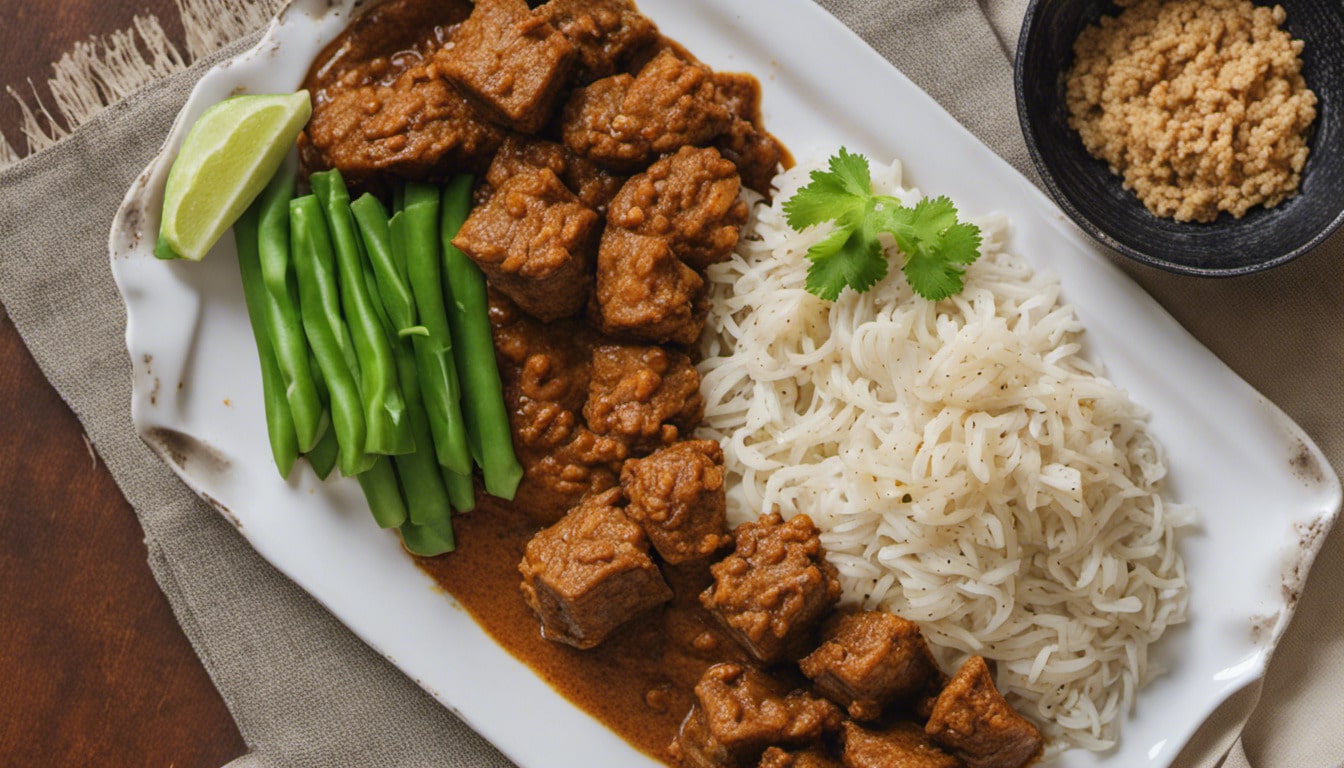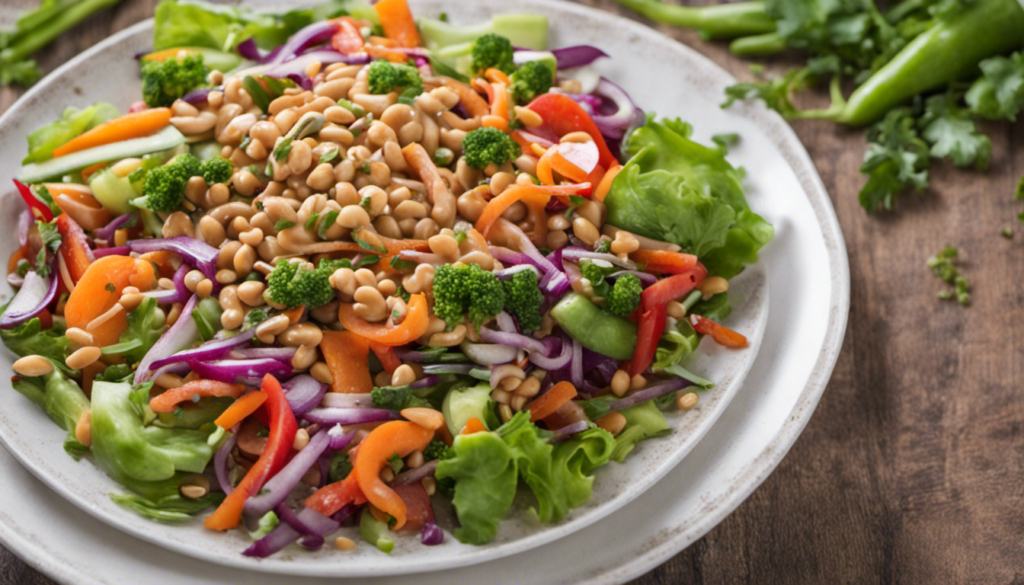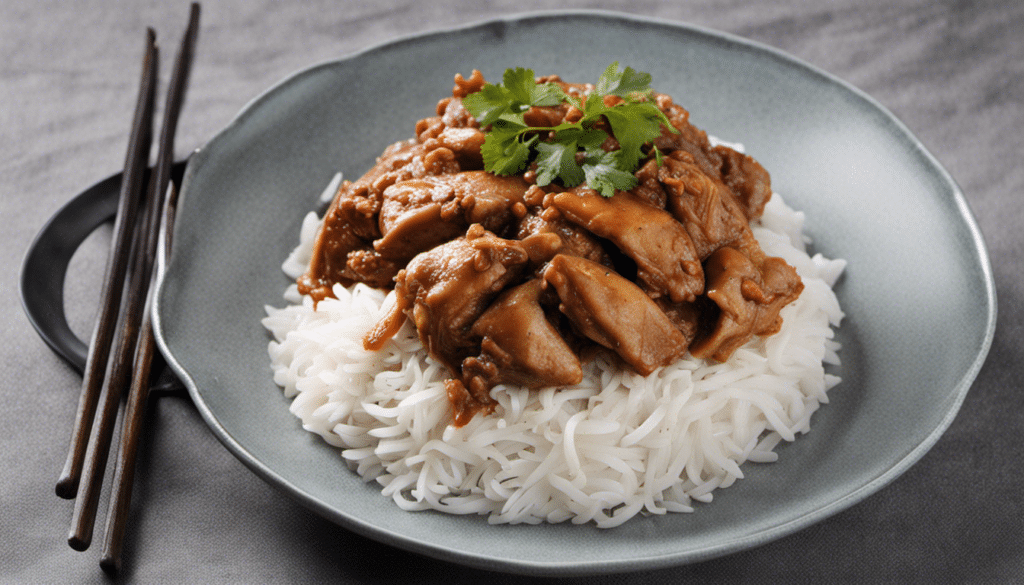| Prep: 20 mins | Cook: 45 mins | Difficulty: Medium | Serves: 6 |
| kcal | fat | saturates | carbs |
| 358 | 21g | 13g | 28g |
| sugars | fibre | protein | salt |
| 9g | 4g | 13g | 0.7g |
Why I Love Malaysian Tempeh Rendang
Every once in a while, a recipe transcends its cultural roots, achieving the kind of universal appeal that can unite even the most diverse dinner tables. For me, the classic Malaysian dish, Tempeh Rendang, is one such recipe, and I am excited to share why I truly love it.
A Love Story with Tempeh Rendang
My passion for Tempeh Rendang partially originates from my love for the star ingredient – tempeh itself, a plant-based protein with a unique and inviting texture. Further ignited by my culinary curiosity, it was the complexity and harmony of flavors – the sweetness, the tang, the spice – that truly won me over. Just like the way we combine Creole richness with French elegance in our Louisiana traditions and just like Jamie Oliver does it with a pork twist, this recipe allows me the opportunity to experiment and experience cultural richness within the comfort of my kitchen.
Layer Upon Layer of Flavors
Despite its simplicity, Tempeh Rendang offers a layer upon layer of flavors thanks to the meticulous combination of ingredients. Bitter, sweet, spicy, sour, and salty – it’s a marvelous creation that leaves your tastebuds delighted. The fragrant aroma of lemongrass paired with the tartness of tamarind paste and the creamy flavor of coconut milk creates a symphony of taste that triggers a culinary memory worth repeating time and again.
Inspired by my diverse culinary background and driven by my passion for creating delectable dishes, I have truly fallen in love with the art of making Tempeh Rendang. It’s a recipe that has not only honed my skills but also expanded my palate, taking me on culinary journeys I could only dream of.
Whether you’re a longtime lover of Asian cuisine or just looking to try something new, I guarantee that this recipe will introduce you to a unique and enchanting culinary experience, taking your taste buds on an unforgettable journey.
I invite you to explore and embrace the fusion of flavors that is Tempeh Rendang. Happy cooking!
What You’ll Need
- 1.5 lbs of tempeh
- 1 cup of coconut milk
- 1 cup of water
- 2 stalks of lemongrass
- 3 kaffir lime leaves
- 2 tablespoons of tamarind paste
- 2 tablespoons of vegetable oil
- 2 tablespoons of brown sugar
- 1 teaspoon of salt
- 2 tablespoons of rendang curry powder
- For the spice paste:
Method
Step One
Begin by preparing the spice paste. Combine the shallots, garlic, soaked dried chillies, ginger, and galangal in a blender or food processor. Process until you achieve a fine paste, adding a little water if necessary to aid the blending process.
Step Two
Heat the vegetable oil in a large pan or wok over medium-high heat. Add the spice paste to the pan, stirring constantly until fragrant. Make sure to prevent the paste from burning.
Step Three
Chop your tempeh into cubes and add it to the pan, stirring to coat each piece in the spice paste. Fry the tempeh until it begins to brown.
Step Four
Add your rendang curry powder to the pan, and stir to combine it with the tempeh and spice paste. Allow the mixture to cook for another few minutes so that the flavors can meld together.
Step Five
When the curry powder is well integrated and the mixture fragrant, add the coconut milk, water, and tamarind paste, stirring well to combine. Bring the mixture to a slow simmer.
Step Six
Once the mixture is simmering, add the lemongrass stalks, kaffir lime leaves, brown sugar, and salt to the pan. Stir well to combine, then reduce the heat to low and allow the mixture to simmer for at least an hour, or until the sauce has thickened and the tempeh is tender.
Step Seven
Check the seasoning of your Tempeh Rendang. Add more salt, sugar, or tamarind paste as needed, then remove the lemongrass stalks and kaffir lime leaves before serving. This dish is best paired with steamed rice and enjoyed hot.




